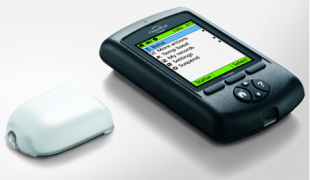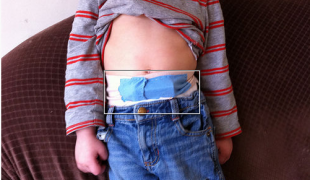- 2409
- 247
- 2
- 5
- 0
- Help Ukraine
About the solution
Alzheimer's and dementia patients sometimes lose interest in eating. This can happen for a long list of reasons including loss of taste, the ability to smell, memory loss, and thinking they already ate.
Here go the author’s tips:
"1. The First Question I Always Ask is - What Color are Your Plates?
In a study conducted at Boston University researchers found that patients eating from red plates consumed 25 percent more food than those eating from white plates. Before you go, let me ask you this simple question? Are you sure an Alzheimer's patient can see the food on the plate? Meaning, see it is a way that you and I do, and then eat it.
2. Make eye contact while eating.
Sit directly in front of your loved one living with dementia and make eye contact while eating.
Smile and wait for them to smile back at you.
Be patient are the key words here. You might have to do this for a while before it starts working. Remember, you are trying to break a bad pattern and replace with a good pattern.
Here are some additional eating tips for dementia patients.
1. Utensils. At some point your patient might have problems using forks, knives, spoons, etc. If so, consider trying finger food. Chicken strips, fish stick, hamburgers, and even shrimp fall into this category.
2. Arrange the food on the plate. If the patient is having trouble eating, less food (portion size), and less items.
3. Praise the food.
4. Eat small all day long. I would give Dotty six potato chips at a time. If you can get your loved one to eat a small amount, several times during the day, that might help".
This solution shall not include mention to the use of drugs, chemicals or biologicals (including food); invasive devices; offensive, commercial or inherently dangerous content. This solution was not medically validated. Proceed with caution! If you have any doubts, please consult with a health professional.
DISCLAIMER: This story was written by someone who is not the author of the solution, therefore please be advised that, although it was written with the utmost respect for the innovation and the innovator, there can be some incorrect statements. If you find any errors please contact the patient Innovation team via info@patient-innovation.com
-
-
455
-
0
-
6802

Woman creates nonprofit organisation to help people with neurodegenerative conditions with music
CAREGIVING
Playing an instrument
Parkinson's Disease
Dementia (Alcoholic Dementia, Vascular Dementia)
Strategy/Tip
Anxiety
Difficulty concentrating or making decisions
Tremors
Muscle weakness
Depressed Mood
Difficulty speaking or understanding speech
Cognitive impairment
Memory loss
Confusion
Restlessness or feeling slowed down
Sleep disturbances
Mood swings
Depression or anxiety
Fatigue
Enhancing Mental Health
To improve Treatment/Therapy
Caregiving Support
Neurology
Psychiatry
United States
-
-
-
572
-
2
-
12363

OmniPod® - a wireless insulin pump
(SELF)-CARE: EATING: Eating independently.
CAREGIVING
(SELF)-CARE: EATING: Eating independently.
diabetes type 1
diabetes type 2
Gestational Diabetes
Body-Worn solutions (Clothing, accessories, shoes, sensors...)
Enhancing health literacy
Promoting self-management
Restoring heart health
Managing diabetes
Manage Medication
Preserving Organ Function
Promoting inclusivity and social integration
To implement a diagnostic tool
To improve Treatment/Therapy
Preventing (Vaccination, Protection, Falls, Research/Mapping)
Raise awareness
Caregiving Support
Endocrinology
General and Family Medicine
Pediatrics
United States
-
-
-
615
-
0
-
9726

Mother creates Potty Training Belt for children with proprioceptive difficulties
(SELF)-CONTROL: URINARY CONTINENCE: Maintaining urinary continence
(SELF)-CARE: USING THE TOILET: Using the toilet independently
(SELF)-CONTROL: BOWEL CONTINENCE: Maintaining bowel continence
Autism
Strategy/Tip
Body-Worn solutions (Clothing, accessories, shoes, sensors...)
Anxiety
Difficulty concentrating or making decisions
Social withdrawal or isolation
Irritability or anger outbursts
Restlessness or feeling slowed down
Panic attacks
Difficulty controlling impulses
Racing thoughts
Obsessive thoughts or compulsive behaviors
Restoring mobility
Promoting self-management
Managing Neurological Disorders
To improve Treatment/Therapy
Raise awareness
Caregiving Support
Child and Adolescent Psychiatry
Neurology
Pediatrics
United States
-
 en
en